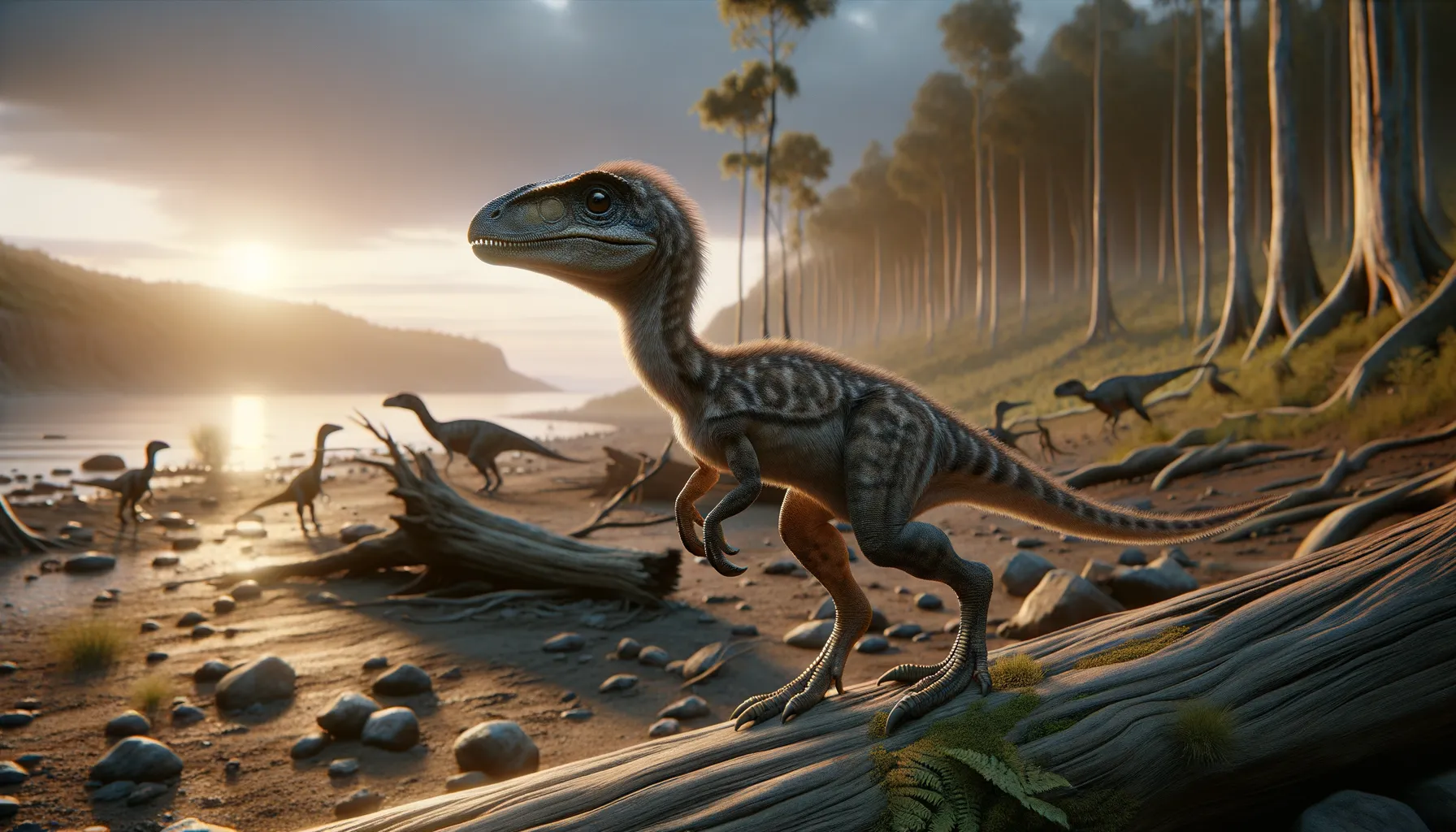
Stenonychosaurus
Swift strides and clever mind!
Period
Cretaceous
Length
Measured up to 3 meters long.
Height
Stood about 1 meter tall.
Weight
Weighed around 50 kilograms.
Stenonychosaurus was a small, bird-like dinosaur known for its agile body and long, slender limbs, adapted for quick movements. Its most striking feature was the relatively large brain, suggesting high intelligence compared to other dinosaurs. Known for its grasping claws and keen senses, Stenonychosaurus thrived in the Cretaceous period. This dinosaur offered insights into the evolutionary links between dinosaurs and birds.
Diet
Stenonychosaurus was an omnivore, feeding on small animals and plants. Its diet likely included small mammals, reptiles, insects, and various vegetation.
Hunting
It used its keen eyesight and sharp claws for hunting. Although primarily a solitary hunter, it may have occasionally hunted in groups to capture larger prey.
Environmental challenges
Stenonychosaurus faced predators like larger theropods and environmental changes during the Cretaceous period that affected food availability. Adaptations such as its intelligence and speed were crucial for survival. Climatic fluctuations also posed challenges, requiring versatile dietary habits.
Speed
Ran quickly on two legs.
Lifespan
Lived approximately 10 to 20 years.
First discovery
Discovered in Alberta, Canada, in 1932.
Fun Facts
- Stenonychosaurus was a small, bird-like dinosaur that lived around 75 million years ago during the late Cretaceous period.
- It was about the size of a turkey, measuring around 3 meters long, including its long tail.
- One of the most notable features of Stenonychosaurus was its large eyes, which suggest it might have been nocturnal, hunting at night.
- Stenonychosaurus had a large brain for its body size, leading some scientists to speculate it was one of the more intelligent dinosaurs.
- This dinosaur had sharp, retractable claws on its feet, much like the modern-day eagle, which it likely used for catching prey.
- The name 'Stenonychosaurus' means 'narrow-clawed lizard' due to its distinctively long and slender toe claws.
- Fossil evidence of Stenonychosaurus was first discovered in Alberta, Canada, which is known for its rich deposits of dinosaur fossils.
Growth and Development
Stenonychosaurus grew rapidly to reach maturity, maximizing survival chances. Its skeletal structure developed progressively, with limbs and brain showing significant growth phases. Such development enabled it to efficiently hunt and evade predators.
Habitat
This dinosaur inhabited forested and open areas, thriving in varied environments. Its habitats provided ample opportunities for diverse diet sources. Seasonal changes in its environment allowed adaptability and resourcefulness in finding food.
Interaction with other species
Stenonychosaurus coexisted with multiple dinosaur species, competing for resources. Occasional skirmishes with other small theropods may have occurred. Its keen senses and intelligence likely gave it an edge in such interactions.
Natural lifespan
Typically lived for around 10 to 20 years in the wild.
Reproduction
Reproduction involved laying eggs, likely in well-hidden nests. Parental care might have been present, ensuring offspring survival. Nesting habits and locations were selected to avoid predators and environmental hazards.
Social behaviour
While primarily solitary, evidence suggests some social interactions. Social behaviour may have included group hunting or territory defense during critical times. Communication could have been key in these interactions.
Fossil locations
Fossils have been predominantly found in Alberta, Canada. Additional fossils may have been unearthed in similar North American regions. These discoveries provide valuable insights into its habitat and lifestyle.
